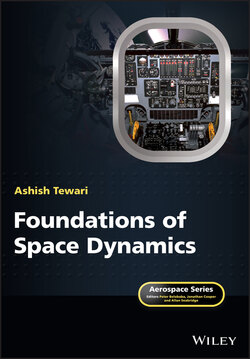Читать книгу Foundations of Space Dynamics - Ashish Tewari - Страница 29
2.3 Newton's Laws
ОглавлениеIn 1687 Newton gave his three famous laws of motion, which are valid for the motion of all objects (unless they are moving at speeds comparable to the speed of light). Stated briefly, they are the following:
1 An object continues to move in a straight line at a constant velocity, unless acted upon by a force applied to it by another object.
2 The time rate of change of the velocity (called the acceleration) of an object is directly proportional to the force applied to the object. The constant of proportionality is a property of the object, called the mass.
3 If an object, A, applies a force on another object, B, then B applies a force on A of the same magnitude, but opposite in direction to that applied by A.
The consequences of these laws are profound, as they govern the motion of all objects (which are moving quite slowly when compared to the speed of light2). The first law implies that there is no absolute position in space, because two observers moving in parallel straight lines at a constant speed, , relative to one another find two events separated in time to take place at different positions. Such observers can be regarded to be located at the origins of two different reference frames, and , such that the relative motion takes place along the parallel axes, , and . The distances travelled by a moving object during the time, , measured in the two frames are different, as given by the following Galilean transformation:
(2.17)
Newton's laws applied to a moving object are equally valid in the two reference frames, and ; hence they are both referred to as inertial reference frames. Another consequence of the first law is that it postulates an absolute quantity called the time, which is the same in all reference frames, and is therefore unaffected by the motion. The second law assigns a property called the mass to all material objects, which can be determined by measuring the force applied to the object and the corresponding acceleration experienced by it, while the third law defines the force applied by two isolated objects upon each other.
